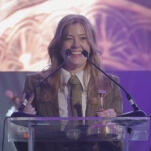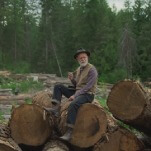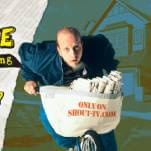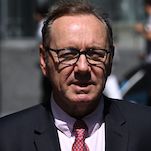House Of Fools

As film careers go, Russian writer and director Andrei Konchalovsky hasn't exactly been predictable. He began by co-writing several of Andrei Tarkovsky's early films, went on to direct Runaway Train (written, in part, by Akira Kurosawa), and then, in 1989 alone, paired James Belushi with Whoopi Goldberg for Homer & Eddie and Sylvester Stallone with Kurt Russell for Tango & Cash. Moving Konchalovsky about as far away from Hollywood as possible, House Of Fools heads to a remote corner of the former Soviet Union, revisiting a real-life 1996 incident in which the Chechen war spilled over into a mental hospital in nearby Ingushetia. When the hospital's small staff leaves it unattended–some leave to get help, some just leave–the inmates are forced to fend for themselves. What follows frequently resembles the French lunatics-freed-from-the-asylum peacenik classic King Of Hearts, but with blood and explosions in place of dewy idealism. As Chechen rebels move in, one reluctant soldier (Sultan Islamov) forms a particular attachment to the cheerful, accordion-toting Yuliya Vysotskaya. But several problems impede their potential romance, including the war and her imaginary fiancé, pop star Bryan Adams, who plays himself in sequences bringing Vysotskaya's glossy fantasies to life. Beginning and ending in black comedy but shifting tones and focus several times between, House Of Fools never finds any forward momentum, but Vysotskaya's sweet performance and the unsubtle but effective use of the war-torn asylum as a stand-in for the former USSR keep it compelling. Konchalovsky's command of atmosphere and hard-won optimism doesn't hurt, either. Using a mix of professional actors and actual inmates, he populates a grim, dank institution with already desperate characters who find a backbone of resiliency when the times take a turn for the even-worse. And it all unfolds to the strains of "Have You Ever Really Loved A Woman?" Who could have predicted that?







































